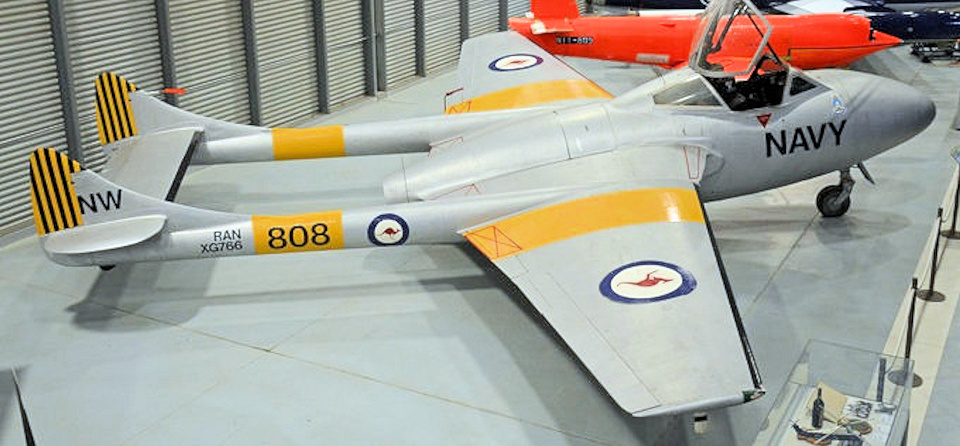 |
|
TOPEKA REGIONAL AIRPORT @ FORBES FIELD, TOPEKA, KANSAS |
|
 | |
DE HAVILLAND GOBLIN 35 CENTRIFUGAL TURBOJET ENGINE |
|
 |
|
DE HAVILLAND GOBLIN 35 CENTRIFUGAL TURBOJET ENGINE The De Havilland Goblin turbojet was the second British designed turbojet engine to fly and was based on compressor technology pioneered by Frank Whittle in the 1930ís. Design of the engine was carried out by Frank Halford at his London consulting firm starting in April 1941. Originally named the Halford-1, after its designer, the engine (developing 2,700 lbs. of thrust) first ran in April 1942 and achieved its first flight while being fitted to the fourth prototype British Gloster Meteor jet fighter (DG206) on March 5, 1943. During this period, De Havilland had purchased Frank Halford's company, appointing Halford as the chairman of the De Havilland Engine Company. The Halford-designated jet engines were thereafter renamed "Goblin". The improved Goblin D.Gn.2 version delivered 3,125 lbs. of thrust and replaced the H-1 in the De Havilland Vampire fighter aircraft. Three generations later, the DH Goblin 35 (shown here on display at the Combat Air Museum) was built to deliver 3,500 lbs. of thrust. This engine (#16488), built at the De Havilland engine plant at Leavensden, Hertfordshire, UK, was installed in a Sea Vampire Mk. T.22 land-based pilot trainer, operated by the Royal Australian Navy at the Naval Air Station at Nowra, New South Wales, Australia. It is uncertain how this engine migrated to the US. Of interest regarding the H-1 and its employment in the development of US military aviation, in July 1943 one of the two British H-1s then still available, was sent to the United States, where it was selected to become the primary engine of the early Lockheed P-80 (later the T-33) Shooting Star. This engine was fitted to the P-80 prototype that first flew in January 1944. Because of production difficulties and design delays at Allis Chalmers, this engine was not actually used for the P-80, instead, the Allison J33, developed by General Electric (as the I-40) was chosen for the production Lockheed P-80A. GENERAL CHARACTERISTICS: | |
 Sea Vampire of the Royal Australian Navy at the Fleet Air Arm Museum at Nowra. Image from www.navy.gov.au/aircraft |
|
Copyright © 2008-2025 Combat Air Museum |
|